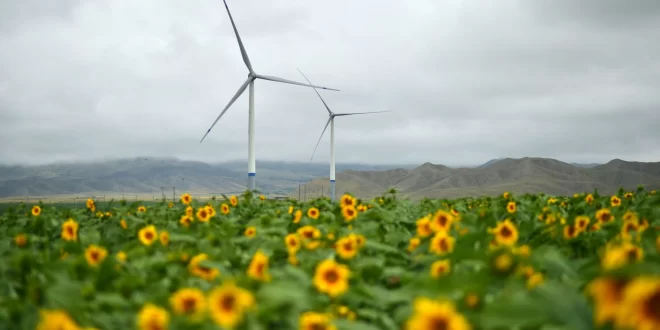Governments around the world are pushing for the rapid development of renewable energy projects in an attempt to move away from fossil fuels. But as Europe and the U.S. speed ahead with new solar and wind projects, the criticism these projects are facing is ramping up as well. Whether or not energy firms can develop the largescale projects necessary for an energy transition in the face of such opposition remains to be seen.
During COP26, many governments made bold promises to introduce radical climate targets and invest heavily in the renewable energy sector. The recent Russian invasion of Ukraine has only added fuel to the fire, as the potential oil and gas shortage has political powers looking to renewables as an alternative energy source. But many of these grand plans have been met with significant opposition from local residents, often because of a ‘not in my backyard’ (NIMBY) mentality.
In Vermont, residents argue that giant wind turbines destroy the mountainous landscape and create noise that keeps them up at night. When it comes to solar farms, people argue that the expansive sea of solar panels takes away from prime agricultural land. Others have environmentalism at the core of the argument, as each renewable energy project requires new roads and infrastructure to bring vast amounts of equipment to rural areas. Often, explosives are used to carve out the landscape and make it accessible for workers to construct wind and solar farms. But more-often-than-not people have a NIMBY response to renewable operations.
This seems ironic in a state often hailed as a green leader, with 99.9 percent of its in-state-produced electricity coming from renewable sources. Yet, many of these largescale renewable projects emerged around a decade ago, with no new major projects currently in the pipeline.
In fact, renewable energy projects often face the same level of opposition as fossil fuel developments. In France last year, fishing boats blocked a ship in Brittany with the aim of preventing a $2.9 billion wind farm from being developed. The fishermen argued that it could disrupt the marine life in the region as well as negatively affect their livelihoods. Due to the large area of land or water required to install renewable energy projects, agricultural workers and fisherfolk around the world are increasingly protesting new developments by energy firms.
But as governments make net-zero carbon emissions pledges, and courts put pressure on oil and gas companies to invest more heavily in renewables and cut their emissions, there is a new era of resistance over energy projects. Residents opposing the projects find themselves battling against both the companies doing the project and environmentalists who want the developments to go ahead. For rural workers, there is also a fear that supporting renewable energy projects in their area could cost them their jobs. This sentiment is being felt not only in Europe and the U.S. but also in Korea, Colombia, and Mexico, to name a few.
A whole other conundrum emerges when it comes to environmentalists, who, on the surface, support renewable energy projects but when wind and solar farms crop up across the country many of these activists complain about the environmental impact. Wind farms inevitably disrupt the wildlife in their vicinity due to noise pollution and the power of their huge blades. Wind turbines often kill migrating birds that fly into their path. In areas where there are endangered species, this is seen as even more of a problem.
In the U.K., a wind farm on the Norfolk Coast being backed by Prime Minister Boris Johnson could power 10 percent of UK homes, around 3.9 million houses, once up and running. And Swedish firm Vattenfall, which is running the project, believes “offshore wind will be the backbone of our energy system as we tackle climate change. By 2050, it’s estimated that renewable energy will provide 80% of our electricity needs, and much of this will need to come from offshore wind farms.” And “Norfolk Vanguard and Norfolk Boreas are part of the next generation of wind farms. By working with communities, the supply chain, skills and environmental experts, we have designed projects that can bring real lasting benefits”, it stated.
Meanwhile, land-use conflicts in the U.S. have meant that 31 big wind and 13 major solar projects were halted across the country in 2021. So, just what are governments and energy firms supposed to do as they are pushed to develop the renewable energy sector while facing constant opposition from one side or another? With pledges of net-zero and worries over fossil fuel energy shortages, it has never been more important to expand the renewable energy sector, but it will not be an easy ride. Governments will need to work with communities to give residents and rural workers the support they need as huge new solar and wind farms are constructed to secure the future of energy.

 Iran Energy News Oil, Gas, Petrochemical and Energy Field Specialized Channel
Iran Energy News Oil, Gas, Petrochemical and Energy Field Specialized Channel



